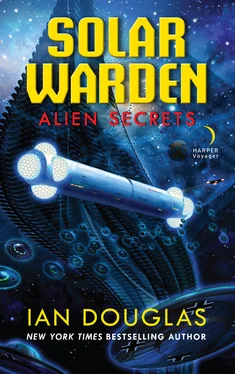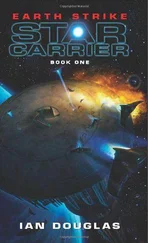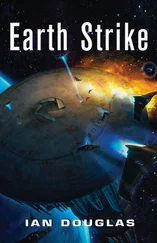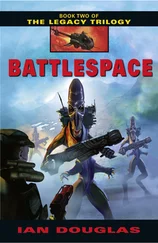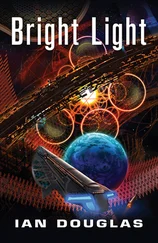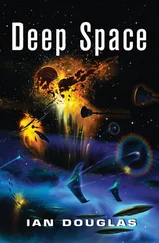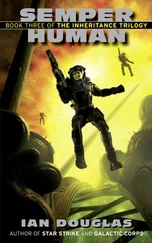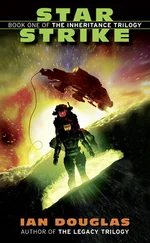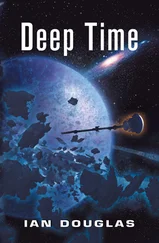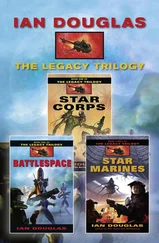Benedict led them past the looming spacecraft, though Hunter was itching to go on board. “A good many years,” Benedict had said. How many years? How long had these things been flying?
“Some of you gentlemen might remember a flurry of UFO cases back in 1989, 1990, in Belgium, and out over the North Sea? Big black triangles like this one. That was us.”
At least twenty-five, then. Jesus.
There were other craft stored in that subterranean hangar.
On the southern edge of Wright-Patt, Hunter knew, was the National Museum of the US Air Force. Born and raised in Dayton, Ohio, Hunter had practically lived in the place when he was growing up. This hangar was like that … huge and open and filled with artifacts straight out of the history of flight. The biggest difference seemed to be that this museum was not open to the public … and the fact that it seemed to be devoted to alien spacecraft recovered from around the world.
The craft came in all shapes and sizes, though most were saucer shaped, with silvery hulls. Many were in fragments and might have been anything. Small tags on display stands identified each. The one labeled “Roswell, New Mexico, July 1947” had had its hemispherical undercarriage shredded into fragments, many of which were spread out on several nearby tables.
“I didn’t think you’d have these things on display,” Hunter said.
“They’re not, really. We keep them here so that our technicians and xenotech people have ready access to them. We’ve been collecting these things for decades, and we’re still learning from them. You’ve heard of Roswell, of course …” He stopped, then gestured at a battered, burned, and rusty-brown-looking craft in one corner. It was an acorn shape, perhaps twelve feet wide and fifteen high.
“That’s from the Roswell crash, sir?” Minkowski asked.
“No. Roswell is over there. This one is a particularly interesting craft called Die Glocke—‘The Bell.’ It was being constructed in Nazi Germany at the end of the war, when it mysteriously vanished, along with an SS officer named Hans Kammler, who was heading the research team. We recovered it outside of a small town in Pennsylvania twenty years later.”
“Kecksburg!” Nielson exclaimed. “I read about that.”
Benedict nodded.
“What’s this writing around the base?” Brunelli asked. The swollen base of the craft showed a continuous line of angular markings—triangles and circles and straight lines and a wealth of other geometric figures crowded together one after another.
“Alien writing, of course. We’re still trying to decipher it.”
“So the Germans didn’t build it?” Taylor asked.
“They reconstructed it,” Benedict said. “We think it was from a crash they retrieved in Bavaria back in the late thirties. We also think they had some help in the reconstruction. Alien help.”
Hunter was doing some math in his head, and it didn’t add up. “You’re saying,” he said, “that the Nazis had time travel ?”
“Yup. At least they managed to send this pod twenty years into the future, where it crashed a second time. We had an idea that it was coming, though, and we had a special response team ready to go in and pick it up.”
“Yeah, but time travel ?” Minkowski said. “That’s wild-assed Hollywood stuff.”
“Maybe so, but that doesn’t mean it’s not possible. You see, gentlemen, it turns out that if you have the technology to travel between the stars, you also have the ability to travel in time. Einstein pointed that out. Space and time are part of the same thing—what Einstein called ‘space-time.’ Bend and twist one, and you bend and twist the other. So, apparently, the Galaxy is brimming over with life and civilizations that have spread out to fill space … and time .”
“That’s … incredible,” Hunter said. He took a closer look at The Bell. A hatch in the side was open—it looked like it had been pried open with brute force. Inside there were two wire-frame seats with canvas straps, one considerably larger than the other. “Two passengers?”
Benedict nodded. “Hans Kammler … and another.”
“What happened to them?”
“I’m not at liberty to say, Commander.”
Hunter nodded understanding, but privately suspected that Benedict didn’t know himself. The information would be more highly classified than USAP clearance, and might even be beyond Benedict’s reach.
“Sir …” Hunter began, then stopped. He wasn’t sure how to formulate the question.
“Go ahead. If I can tell you, I will.”
“Yes, sir. Why all the secrecy? Why not just tell people that we have time travelers from space … and have known about them for years? I mean, people have been seeing them since God knows when. The public knows . Why try to keep it hidden?”
“Good question, Commander, but one with a very complicated answer. Back in January of 1953, the Intelligence Advisory Committee commissioned the Robertson Panel, which looked into the problem of UFOs. Were they really alien? More, were they a threat? There’d been a nasty scare the previous July, when hundreds of unidentified targets were tracked in the skies above Washington DC. The Robertson Panel concluded that UFOs posed no immediate threat to the US, but did warn that public sightings might cause military communications networks to be overwhelmed. They also warned that full disclosure might have dire consequences. Religions might collapse, once people learned that these alien visitors had had a hand in creating Homo sapiens . The stock market might collapse, people might riot in the streets, or succumb to mass hysteria, people would lose faith in government. Basically, civilization itself might fall.”
“Orson Welles,” Hunter said. “ War of the Worlds .”
“Precisely. So the panel suggested that the public not be told more, that the government push educational programs aimed at defusing the situation: discrediting people who claimed they saw them, trotting out skeptical experts to debunk sightings, that sort of thing. The whole issue was put under a very tight lid of not just secrecy, but compartmentalized secrecy. Even if you knew all about ‘A,’ if you didn’t have a serious need to know about ‘B,’ you didn’t hear about ‘B.’ Period.”
“Ha!” Nielson said. “I knew there was something fishy about all the official denials.”
“Weather balloons and swamp gas,” Taylor added. “Ri-i-i-i-ight …”
“I still don’t see why things are still classified, though,” Hunter insisted. “I mean … in the 1950s, sure. We didn’t know if the Russians might be snooping with some sort of high-tech aircraft, or whatever. Better to keep stuff like that under wraps. But today? People are used to the idea of aliens and spaceships, and they’re mostly cool with it! Star Trek , and all of that …”
“The Robertson Panel did recommend a slow process toward eventual disclosure. Certain government agencies were tasked with making certain that only pieces, only safe pieces, were released, a little at a time. There were some movies that came out in the ’80s designed to accustom the public to benevolent, odd-looking aliens, for instance. That was actually quite deliberate. More recently, you have documentary-style programs talking about ancient aliens possibly tinkering with the human genome …”
“The guy with the hair,” Minkowski said.
“Among others. The point was to gradually acclimate the public to the idea of aliens. In any case, it wasn’t just the notion that there were space-traveling aliens to worry about that was being suppressed. It was something far more deadly.”
Читать дальше
